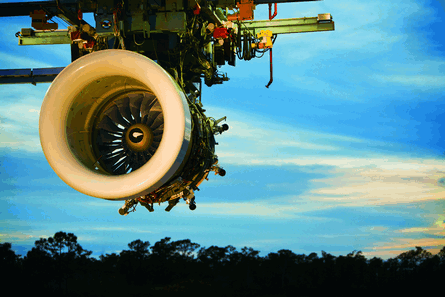Try to dream up a winning formula for a high-risk, high-technology manufacturing venture and you would be hard-pressed to top CFM International. The GE-Snecma venture behind the CFM56 family of turbofan engines began on the premise that the partners could in effect make two and two equal five by exploiting each others' strengths. It got off to an economical start in 1971 by pairing the GE core of the F101 engine with an existing Snecma fan.
The result turned out to be both economical and hugely reliable, and hence attractive to operators on an acquisition and maintenance cost basis.
Luck played a part when Pratt & Whitney, which dominated the 1970s narrowbody market with its JT8D, failed to update its engine for the then-new Boeing 737. That left the field open for CFM, and P&W repeated the favour with the next-generation 737.
Some 7,000 aircraft and numerous CFM56 updates later, the world is a comfortable place for CFM and P&W is gambling on a radical new engine architecture - its GTF geared turbofan - to prepare it for a new generation of jets in the form of the Bombardier CSeries small airliner and Mitsubishi MRJ regional jet. Its ultimate aim is the big prize: Airbus's and Boeing's eventual replacements for the A320 and 737.
HIGH STAKES
Looking ahead to those so-called next-generation narrowbodies, the stakes for engine makers are huge. Fuel prices may have come down dramatically from their summer 2008 historic highs, but the aerospace industry expects the future to be characterised by uncomfortably high fuel prices.
Thus, airlines - for which fuel represents nearly a third of operating costs even at today's prices - are anxious to see Airbus and Boeing develop, sooner rather than later, new medium-range narrowbodies offering radical improvements in fuel economy.
 |
|---|
© Pratt & Whitney |
But Airbus and Boeing - which in any case are preoccupied with their struggling widebody programmes - have made it clear they will not be developing new aircraft unless a 25% or better reduction in fuel burn is achievable. That can not happen without a new generation of engines.
CFM has no intention of repeating P&W's JT8D mistake by not moving on from the CFM56. Its Leap-X programme, launched at last year's Farnborough air show, but in reality carrying on 10 years of research into a next-generation powerplant, is described by executive vice-president Olivier Savin as a bid to "redefine state of the art" through new materials, improved aerodynamics and attention to the engine combustion cycle.
Leap-X hopes to cut fuel burn by 16% over the best-performing CFM56, and cut NOx by 60% while reducing noise by 10-15db. Testing of a new composite fan has begun at CFM's Villaroche facility, south of Paris, and if all goes to plan CFM will demonstrate the full engine by 2012 for certification in 2016.
Many details are still being worked out, but what will not change as CFM moves to a new generation of technology is the basic CFM proposition, says Savin, who is adamant that the continuation of the CFM standard for reliability and low maintenance costs into the Leap-X generation is an "absolute".
Savin's confidence in the future has its foundation in the 30-year-old CFM business model, which GE and Snecma have just renewed through 2040.
As Savin puts it, everything about the partnership is 50-50. All engines made by either partner in the 18,000-50,000lb-thrust (80-220kN) range will continue to be sold as CFMs, GE will continue to focus on "hot" core development and Snecma on the fan and low pressure turbine, and either partner may use technology it has developed for CFM in its own products outside that range.
Revenues and profits are split down the middle, for every engine model made by one partner there is a counterpart with the other, and every position in the company is matched by both partners.
Costs, says Savin, are not split, so each partner is driven to reduce them. And, over 30 years exchange rate variations have balanced out well. Indeed, this model has been so successful that Paris's Insead business school has asked CFM to make a presentation on it, he says. "The success of the partnership is based on this 50-50," says Savin. "It seems to be a win-win system."
Source: Flight International























